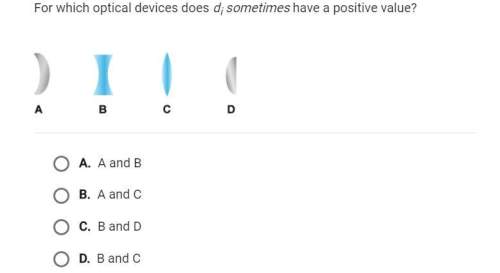
Physics, 16.10.2020 08:01 heyboi2516
The Radium (Ra) nucleus decays as follow, 226Ra → ARn + 4He 88 Z 2 (a) What type of radioactive decay is this? (b) Find the atomic mass number A and the proton number Z of the resulting Radon (Rn) nucleus. (c) Given the masses (expressed in atomic mass unit, u) are 226.025410u for Radium, 2 222.017578u for Radon and 4.002603u for Helium and the square of the speed of light, c , is 931.494 MeV/u, calculate the energy released in this nuclear decay.

Answers: 1
Another question on Physics


Physics, 21.06.2019 23:50
The discovery that the universe appears to be expanding led to a widely accepted theory called a.) the big bang theory b.) the doppler effect c.) hubble’s law d.) solar nebular theory e.) the seyfert theory
Answers: 2

Physics, 22.06.2019 09:30
On a day when the barometer reads 75.23 cm, a reaction vessel holds 250 ml of ideal gas at 20 celsius. an oil manometer ( ρ= 810 kg/m^3) reads the pressure in the vessel to be 41 cm of oil and below atmospheric pressure. what volume will the gas occupy under s.t.p.?
Answers: 2

Physics, 22.06.2019 10:00
One object has a mass of 1 kg and another object has a mass of 3 kg. if the speeds are the same, which of the following is true about their kinetic energy?
Answers: 2
You know the right answer?
The Radium (Ra) nucleus decays as follow, 226Ra → ARn + 4He 88 Z 2 (a) What type of radioactive deca...
Questions


Mathematics, 30.03.2020 16:14











Mathematics, 30.03.2020 16:15

Mathematics, 30.03.2020 16:15


Mathematics, 30.03.2020 16:15

Chemistry, 30.03.2020 16:15


History, 30.03.2020 16:15

Chemistry, 30.03.2020 16:15




